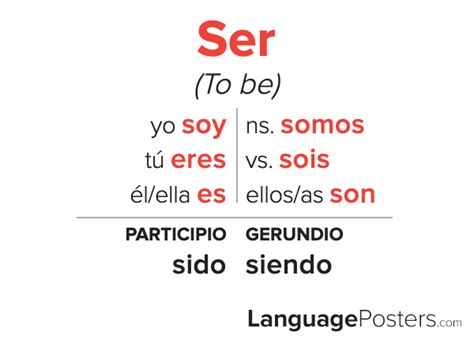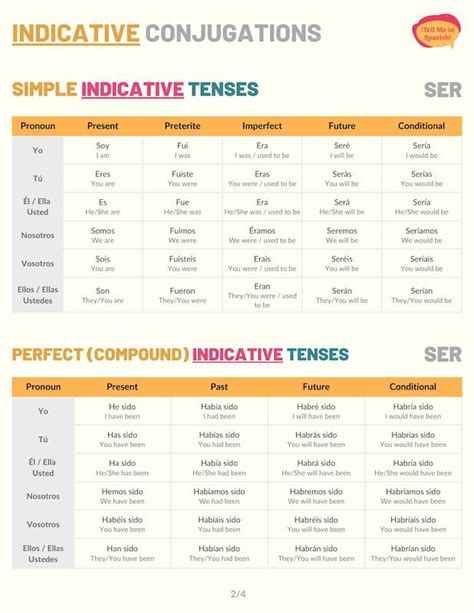What Does Ser Mean In Spanish

The Spanish verb "ser" is one of the most fundamental and versatile verbs in the Spanish language, used to convey a range of meanings depending on the context in which it is employed. At its core, "ser" translates to "to be" in English, but its usage extends beyond a simple definition, encompassing various aspects such as permanent characteristics, inherent qualities, and states of being.
Primary Uses of Ser

When discussing the verb “ser,” it’s essential to understand its primary uses, which include describing inherent or permanent characteristics of a person, place, or thing. For example, physical descriptions, nationality, and occupation are all conveyed using “ser.” Additionally, “ser” is used to express the time of day, dates, and origin of something or someone.
Describing Permanent Characteristics
A key aspect of “ser” is its use in describing permanent or intrinsic qualities of individuals or objects. This can include physical attributes like height, hair color, or eye color, as well as more abstract qualities such as personality traits. For instance, “Ella es alta” means “She is tall,” indicating a permanent characteristic of the person being described.
| Characteristic | Example Sentence |
|---|---|
| Physical Description | Ella es rubia. (She is blonde.) |
| Nationality | Él es estadounidense. (He is American.) |
| Occupation | Ella es médica. (She is a doctor.) |

Distinguishing Between Ser and Estar

One of the most challenging aspects of Spanish grammar for non-native speakers is the distinction between “ser” and “estar,” both of which can translate to “to be” but are used in different contexts. “Ser” is typically used for descriptions of permanent or inherent qualities, while “estar” is used for temporary conditions or locations. For example, “Yo soy una persona feliz” (I am a happy person) uses “ser” to describe a permanent trait, whereas “Estoy feliz hoy” (I am happy today) uses “estar” to describe a temporary state.
Expressing Time and Origin
Beyond descriptions of people and things, “ser” is also used to express the time of day, dates, and the origin of something. For instance, “Son las tres de la tarde” means “It is three in the afternoon,” and “Es el 15 de mayo” means “It is May 15th.” When talking about the origin or source of something, “ser” is used, such as “Es de España” meaning “It is from Spain.”
Key Points
- The verb "ser" is used to describe permanent or inherent qualities of individuals or objects.
- "Ser" is employed to express time, dates, and origin.
- Distinguishing between "ser" and "estar" is crucial for accurate expression in Spanish, with "ser" focusing on permanent qualities and "estar" on temporary conditions.
- Understanding the context in which "ser" is used is key to mastering its various applications in Spanish.
- Practice and exposure to native speech are essential for developing a nuanced sense of when to use "ser" versus "estar."
In conclusion, the verb "ser" plays a vital role in the Spanish language, serving as a foundational element for expressing a wide range of concepts from permanent characteristics to temporal and spatial information. Mastering the use of "ser," along with its distinction from "estar," is essential for any learner of Spanish seeking to communicate effectively and accurately.
What is the primary use of the verb “ser” in Spanish?
+The primary use of “ser” is to describe permanent or inherent qualities of individuals or objects, including physical descriptions, nationality, occupation, time of day, dates, and origin.
How does “ser” differ from “estar”?
+“Ser” is used for permanent or inherent qualities, while “estar” is used for temporary conditions or states of being. Understanding this distinction is crucial for accurate expression in Spanish.
What are some common contexts where “ser” is used?
+“Ser” is commonly used in contexts describing physical attributes, nationality, occupation, expressing the time of day, dates, and the origin of something.



